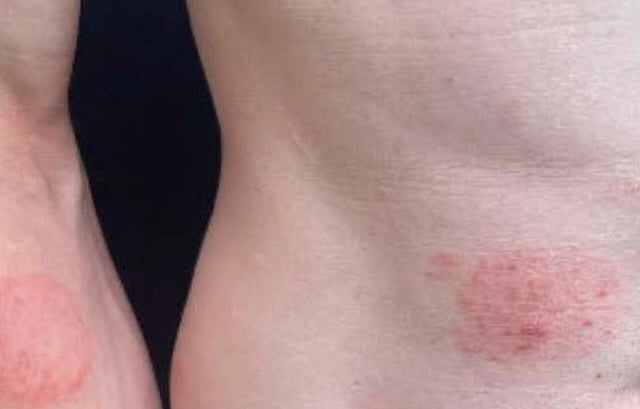(330) 876-1228
8507 Main StreetKinsman, OH 44428
(330) 876-1229

Doctors in New York City are describing the first known U.S. cases of sexually transmitted ringworm, which can cause a nasty rash that can take months to bring under control.
Despite the name, ringworm isn't any kind of worm but instead is a fungus, Trichophyton mentagrophytes. It's more commonly known as jock itch (when it affects the groin area) or athlete's foot, and can produce a round, itchy rash.
Until now, transmission of the fungal infection through skin-to-skin sexual contact has been rare, although cases have been reported in Southeast Asia and France since 2021, researchers reported. These have been a subtype of T. mentagrophytes called TMVII.
The new report concludes that the first U.S. case of sexually transmitted TMVII was reported in June, and "four additional TMVII infections were diagnosed during April-July 2024 in New York City among men who have sex with men."
The rash appeared "on the [patients'] face, buttocks or genitals, and was successfully treated with antifungal medications," said a team led by dermatologist Dr. Avrom Caplan, of NYU Langone Health in New York City.
His team published its findings Oct. 31 in Morbidity and Mortality Weekly Report, a journal of the U.S. Centers for Disease Control and Prevention.
According to the report, all five cases of sexually transmitted ringworm so far documented in the United States involved gay or bisexual men in their 30s who had multiple sex partners.
How did TMVII make its way to the United States? That's unclear, although the man whose case of fungal infection was reported in June said he had recently traveled to several countries in Europe.
All five patients had reported recent sexual contact with other men.
In all five cases, common antifungal medications cleared up the patients' rashes.
The bottom line for clinicians, as well as sexually active people: Be aware "that TMVII can spread through sexual contact and cause lesions on the genitals, buttocks, face, trunk or extremities," Caplan's team said.
They noted that only lab tests can confirm T. mentagrophytes infection, which some people may initially mistake for "eczema, psoriasis or other dermatologic conditions."
The infection can be treated and cured, but takes time. According to the researchers, "patients might require oral antifungal therapy for up to 3 months and should take the treatment until lesions have fully resolved."
That's important, because as long as the rash is present, infected people must avoid skin-to-skin contact with others to avoid passing the infection on. They should also avoid sharing personal items, Caplan and team said.
Finally, they added, patients should resist the urge to use steroid anti-fungal creams to treat the rash, since these can "worsen tinea [ringworm] infection."
More information
Find out more about ringworm at the Mayo Clinic.
SOURCE: Morbidity and Mortality Weekly Report, Oct. 31, 2024
